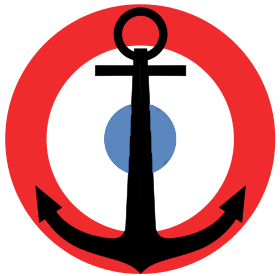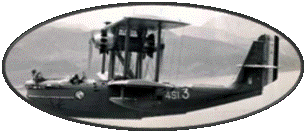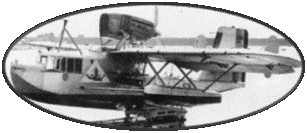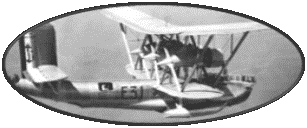The Short S-25 Sunderland
is derived from the civilian long-range seaplane, the Short S-23
"Empire". The latter was developed for trade links between
Europe and the United States or with distant British colonies. The
new aircraft is a four-engine, high-winged seaplane. Its defensive
armament is quite variable and can be different on aircraft of the
same version: thus, it is possible to count up to 16 7.5mm machine
guns, with sometimes a few 12.7mm machine guns. The Short S-25 Sunderland
made its first flight on 16 October 1937, and the first production
aircraft will be assigned to active units from autumn 1938. The
companies Short Brothers and Blackburne Aircraft are in charge of
the manufacture of the new aircraft: 90 Short S-25 Mark I will be
built between 1938 and 1939. The Mark II version, with improved
armament, will be produced from 1941 onwards: 43 units will be produced.
The Mark III version, launched soon after, will be the most produced
version of the Short S-25 with 456 units.
The Short S-25 Sunderland Mk. III received an "ASV" radar
to increase its anti-submarine warfare capabilities. Thus equipped,
it becomes formidable and will destroy during the conflict, 31 U-Boats
for this version alone. The Short S-25, all versions taken together,
will also take part in the destruction of 15 other U-Boats.
The Short S-25 Mark IV that followed remained close to the Mark
III. It will be renamed Short S-45 "Seaford" and will
be used in the Pacific. But quickly, the few examples in service
will be converted into a civilian version and will become the "Solent".
The last version, the Mark V will be produced in about 150 copies,
starting in 1944. The armament and the power of the engines will
be improved with each version.
The Short S-25 "Sunderland", with a consequent armament,
was feared by the German submarines. It was nicknamed the "Flying
Porcupine" by the German Marines. To defend themselves, the
U-Boats were equipped with 37mm anti-aircraft guns and a 20mm quadruple
mount to repel the first attack, allowing them to attempt to dive
before the attacker had time to report for a second attack.
All versions taken together, about 750 examples will be manufactured,
an important production for the one that will be one of the largest
seaplanes used during the Second World War. The RAF withdrew its
last aircraft from active service in 1959. It will be replaced by
the Avro Shackleton, a land-based maritime patrol aircraft. In other
colours, some of the Short S-25s flew until 1969.









